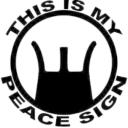Yahoo Answers is shutting down on May 4th, 2021 (Eastern Time) and the Yahoo Answers website is now in read-only mode. There will be no changes to other Yahoo properties or services, or your Yahoo account. You can find more information about the Yahoo Answers shutdown and how to download your data on this help page.
Trending News
Barrel length & Muzzle velocity?
Hey gang. I understand why a longer barrel gives you a higher muzzle velocity at the business end. What I'm wondering is, at what point does the Law of Diminishing Returns kick in? That is, about what is the maximum barrel length you could have before you don't get more velocity? And how would caliber affect the answer? Would your max length be more for an 8mm than for a .22LR?
3 Answers
- dbalduLv 69 years agoFavorite Answer
There's not a pat answer because of differences in powder capacity, burn rate, bore size and so on.
At some point the friction of the bullet in the bore plus air resistance will equal and then exceed the force applied by the expanding powder gas. According to Hatcher's Notebook by Maj. Gen Julian Hatcher, this occurs with the .22 Long Rifle in about 12 to 14 inches, which is unsurprising considering the .22 LR's small bore size, tiny case capacity and consequently fast-burning powder.
I don't know where it occurs with larger bores and greater powder capacity, but I do know that the pressure peaks very early in the bullet's travel (you can see a very informative graph on Page 322 of Hatcher's Notebook), even with relatively slow-burning propellant. For this reason, the relationship of bore length to velocity increase/decrease is NOT linear, as some seem to think. This means that reducing a barrel from 26 to 24 inches reduces velocity less than an equal reduction from 24 to 22 inches, which in turn costs less than another reduction to 20 inches. Hatcher's graph illustrates this very nicely. You get the idea.
And yes, the maximum beneficial barrel length for a centerfire rifle in say 8mm Mauser or 8mm Remington Magnum (both good cartridges, by the way) would be quite a bit greater than for a .22 LR.
The decreasing benefit of barrel length after about 22-24 inches is the reason few hunting rifles are made with longer barrels. There's just not much benefit for the added weight and length. Target rifles that don't have to be humped through the boonies are a different matter, of course.
Source(s): Lifelong handloader, hunter and target competitor - The Real MikeLv 59 years ago
I think I remember reading somewhere that most rifle cartridges will continue to gain velocity past 45 inches. But obviously a barrel that long is going to be pretty impractical. Besides the obvious limited maneuverability, a barrel that long will have to be very thick to be as rigid as a shorter, smaller diameter barrel. The longest barrels I've ever seen are 30 inch Palma barrels.
There are many factors that contribute to where diminishing returns kicks in. Caliber, powder capacity, bullet weight, bore wear, etc. Probably the biggest contributor is the burn rate of the powder. The slower the powder, the longer it will be able to gain velocity. A good example of this is modern artillery and big bore (.50+) cartridges which use barrels quite a bit longer than rifle barrels obviously.
- 9 years ago
* For every two (2)* inches of barrel length whether its two (2) inches shorter, or two (2) inches longer you only lose, or gain 169 Ft per second muzzle velocity up until you reach a total Maximum barrel length of twenty-six (26) inch's.* Beyond a twenty-six (26) inch barrel length you do not gain, or lose any Ft per second muzzle velocity.* You do not gain, or lose any Ft per second muzzle velocity if the barrel length is any longer than twenty-six (26) inches no matter what caliber rifle, or pistol it is.*
Source(s): * Run like a Deer.*..............Fly like an Eagle.*~~





